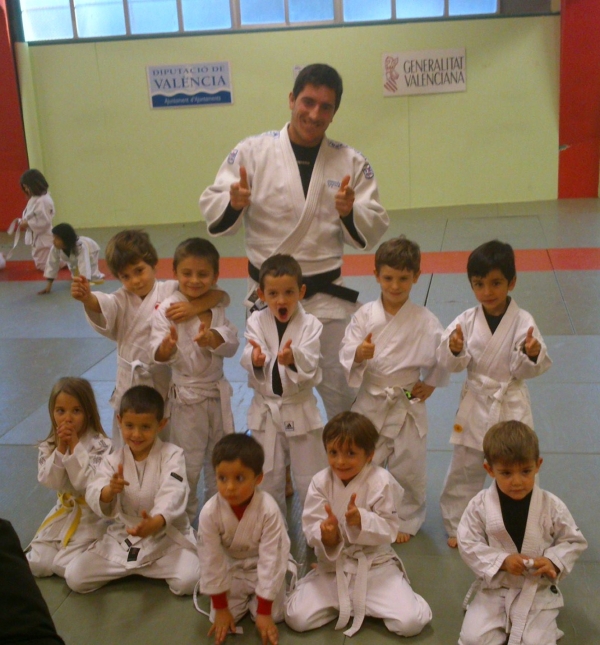Subscribe
Subscribe to our quarterly email newsletter 「ICM News」 to receive recent news about ICM, diverse writings by experts and youth, and relevant information.
Title [Martial Arts Globe] Opinion / Why Martial Arts for Education?

|
Photo a lecturer of martial arts and his students
- Judo, Sports Science, and Education Masters Carlos Lisart Avino
Physical education has gone through many obstacles, arriving at the point where it is considered as a main element in the integral development of childhood. It allows the pupils to develop cognitively, affective and of course, their motor skills. Through Physical education, the student learns to be spontaneous, develops his creativity and urges him to know both himself and the others. But also to respect and value their classmates. For these reasons, this matter is fundamental as its main points are variety, embitterment of relationships, instructing in health,, and driving them away from sedentary lifestyle. This is how it has become an effective social tool that helps adolescents to develop and learn social abilities, values, and manners such as teamwork, mutual respect and companionship. We all know the benefits of sports practice but, does all sport offer the same? When we talk about sports, we always find central values without the sport itself could not occur and is required not only for good practice but also for performance. Depending on the central value of the sport, we will develop it to the extent that we intend to improve our performance. Let's take the classic example of football: the cohesion between the members of a team is essential to achieve results, while for a tennis player the factor of confidence and mental resistance will be key in a match that can be extended to exhaustion. First justification to the big question of “Why martial arts for education?" we find cultural transmission. Since it has such a long story, when you learn some martial art you also learn all the history, folklore and traditions along with it. We can see here the case of Korean Taekkyeon. Korea has just branded Taekkyeon as an intangible cultural heritage under the auspices of UNESCO. That means they recognize Taekkyeon as a way to transmit the Korean culture, folklore and arts and a promise to keep it alive. Another major reason for implementing martial arts instead of others is sports ethics. Martial arts are not only a compound of techniques and training, they count also with a specific moral code of behaviour and certain values that are considered as desirable and unrecordable in that specific martial art. For example, Judo has eight central values considered their belonging. These values are the same world-wide and only differ in translations. They are the following, as stated:
As we can see, not only the techniques and skills are codified but also the values considered desirable. Last but not least, martial arts allow us to use sport as an educational tool and to address the problems of the desired audience. In the topic that deals with education and the integral development of personality, we must focus on self-esteem, self-control, aggression management and respect. But are martial arts more effective in managing aggression and violence than other types of sports? Again our answer is yes. It is evident that violence will always be present in sports as it is in life. In the most positive sense, it is a form of activation that has ensured our survival as a species, but in the worst sense, it is the biggest drag that sports have, understanding it as the forms of behavior desirable by a society, that is, values. It is at this point that martial arts enter. Following the line of the core values, martial arts stand out for their aggressiveness, they deal with it. Teaching through the central axis of violence is how we learn to control it. And it is a long learning. Since childhood it is taught that without an adversary we would not have individual progress and we owe him thanks, that an excess of activation can lead to an easy defeat in a sport in which uncertainty is the determining factor, and a wrong step can take you to the ground. Thus, although it is paradoxical, at the end of a fight it would be very strange not to see the adversaries shaking hands, thanking or bowing despite coming from a direct confrontation.
REFERENCE BIBLIOGRAPHY Nosanchuk and M.L. Catherine MacNeil (1989) Examination of the Effects of Traditional and Modern Martial Arts Training on Aggressiveness. University of Ottawa, Ontario, Canada. Stuart W. Twenlow & Fank C. Sacco (1989) The Application of traditional Martial Arts Theory and practice to the treatment of violent adolescents. ADOLESCENCE vol.33 no. 131.
※ This writing does not reflect the opinon of UNESCO ICM and UNESCO ICM is not directly linked to this writing. |
















